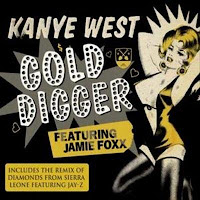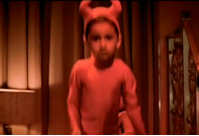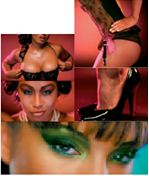 |
| François Truffaut |
The Auteur theory is that the directors creative voice is visible through media outlets, originally it was designed only for films although in more recent years it has become apparent that all visual moving images can be affected by the Auteur theory. This theory was first created by French critics and directors in the 1950's, and was most notably voiced by François Truffaut. The concept describes the mark of a film director through: thematic or stylistic consistencies, personal aesthetic vision, recurring themes, established technique, a defined view of the world and/or a significant degree of control over production.
2. How can Hitchcock be regarded as an auteur (what was his style)?
Alfred Hitchcock (1899-1980) was famously known for being the master of mystery and suspense. Traits of Hitchcock's works are the regular elements of black comedy and eccentric characterisation. This is exemplified by his use of: camera viewpoints, elaborate editing and soundtrack to build suspense.
3. Who is Hype Williams and what videos has he directed?
 Hype Williams whose real name is Harold Williams is a well respected film director, music video director and screenwriter. Hype Williams made himself known by tagging local billboards with his grafitti tag 'HYPE'. Hype Williams has worked with the likes of: 2Pac, Jay-Z, Kanye West, Beyoncé, Christina Aguilera, Coldplay, Ne-Yo, Nicki Minaj and many more.
Hype Williams whose real name is Harold Williams is a well respected film director, music video director and screenwriter. Hype Williams made himself known by tagging local billboards with his grafitti tag 'HYPE'. Hype Williams has worked with the likes of: 2Pac, Jay-Z, Kanye West, Beyoncé, Christina Aguilera, Coldplay, Ne-Yo, Nicki Minaj and many more.4. If HYPE can be considered an auteur, what is his signature style?
 Hype Williams has many signature styles which have developed over the years. On of his signatures up until 2003 was the use of Fisheye lens which is an wide angle lens which produces a strong visual bend which in turn creates a panoramic view.
Hype Williams has many signature styles which have developed over the years. On of his signatures up until 2003 was the use of Fisheye lens which is an wide angle lens which produces a strong visual bend which in turn creates a panoramic view. Another trait of Hype Williams is to have a widescreen shot in the middle of the screen whilst 2 bars of another location or other angles of the artist appear on either the top and bottom or the left anf right side of the screen.
Another trait of Hype Williams is to have a widescreen shot in the middle of the screen whilst 2 bars of another location or other angles of the artist appear on either the top and bottom or the left anf right side of the screen. As well as this Hype Williams often uses tracking shots, mainly from an arieal perspective. This adds a different atmosphere to the music video giving it a multi-dimensional feel rather than the static and basic camera angles. Since 2003, Williams has adopted a signature style combining a center camera focus on the artist or actor's body from the torso upward and a solid color background with a soft different-color light being shown in the center of the background, so as to give a sense of illumination of the background by the foreground subject.This signature style was used in the Gloddigger music video by Kanye West which I have analysed with Goodwin's theory in mind.
Below are 3 videos directed by Hype Williams - from these videos I will be able to understand more fully the different signature stlyes of Hype Williams which prove him to be an auteur within his own right.
This video 'Rock The Boat' by Aaliyah uses the arieal perspective whilst the singer looks up to the camera, the audience is able to see dancers in the background - as the dancers are a trait of the R&B sub-genre.
This video 'Gimme Some More' by Busta Rhymes uses one of Hype Williams original signature styles with the Fisheye lens. Creating a slightly widened view of the visual material.



















